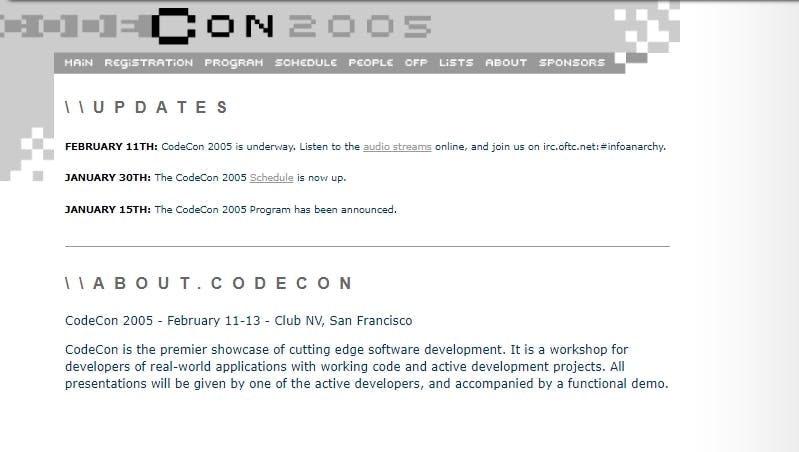
2024-9-5 06:59:58 Author: hackernoon.com(查看原文) 阅读量:4 收藏
Surely, BitTorrent sounds like something familiar, right? It’s that famous file-sharing protocol that now works with the client uTorrent. Well, Bram Cohen, an American computer scientist, is the one who invented it —and more. He’s also considered an early cypherpunk, even if he wasn’t on the 90’s mailing list because he’s been dedicated to creating privacy-oriented and peer-to-peer (P2P) software.
Born in 1975 in New York City, Cohen grew up in a family that nurtured his intellectual pursuits, with his father being a computer scientist. His fascination with computers
During his high school years at Stuyvesant High School, Cohen excelled in mathematics and even qualified for the United States of America Mathematical Olympiad. Indeed,
Before his groundbreaking work on BitTorrent, Cohen was involved in various projects, including MojoNation, a platform he co-developed with Jim McCoy —another early cypherpunk. This system was designed to allow users to securely share files by breaking them into encrypted pieces distributed across multiple computers, in a P2P manner.
It was never
BitTorrent & Chia
Cohen started to work on the BitTorrent software in 2001, but it wouldn’t be until 2004 that he founded the company BitTorrent Inc., along with his brother Ross Cohen and business partner Ashwin Navin. The protocol offers shutdown-resistant, efficient, and scalable file distribution by decentralizing the process. It works by breaking files into smaller pieces, which are then distributed among users (called peers) who download and upload these pieces simultaneously.
This approach has allowed massive piracy to happen over the years, even though
Previous services of this kind, like mp3.com and Napster, were shut down because they were centralized –unlike BitTorrent, which came to solve that issue, despite all odds.
Its system was designed to distribute and share data directly among individual peers, without restrictions, in contrast to traditional methods like HTTP or FTP, which often rely on a single server. The first releases of the BitTorrent software by Cohen’s company were open-source and are still around, allowing widespread adoption and development by various developers and communities.
Over time, aspects of the company’s BitTorrent technology became proprietary, particularly as the company behind it, BitTorrent, Inc. (later Rainberry, Inc.), sought to monetize the technology through various products and services.
The rebranded client uTorrent, released in 2007, was no longer open-source. However, the BitTorrent protocol is open, and there are multiple alternative programs implementing the same protocol, some of them are open-source.
For his part, Cohen left the company to co-found the Chia Network in 2017. This is a blockchain protocol designed with a focus on sustainability. Unlike cryptocurrencies like Bitcoin, which rely on energy-intensive Proof-of-Work (PoW) mechanisms, Chia uses its own consensus algorithm called Proof of Space and Time (PoST), created by Cohen.
This method leverages unused storage space on users’ hard drives to “farm” Chia coins, rather than “mining” them with powerful computing hardware. The idea is to make the network eco-friendlier by utilizing existing resources rather than consuming excessive energy. However, large chunks of space (
Cohen and Cypherpunks
Cohen is considered a cypherpunk by many, but he’s shared that he wasn’t on any cypherpunk lists, because
Len Sassaman, a privacy advocate and vocal cypherpunk (even a
Hal Finney, the first-ever Bitcoin user, and creator of the system RPOW,
However, above all, Cohen’s creations have been reflecting his ideologies. BitTorrent, as a P2P file-sharing system, and Chia, as a crypto ecosystem, have been seen as tools that align with cypherpunk ideals, promoting the decentralization of data and providing users with more control over their digital privacy —and funds.
Besides,
Cypherpunk Projects
We can say that Bram Cohen is more of a lowkey cypherpunk, not as vocal about it as other members. However, his creations follow the same goals. BitTorrent, for instance, revolutionized file-sharing by decentralizing the process, making it virtually impossible to shut down.
Unlike earlier systems like mp3.com and Napster, which relied on centralized servers that could be targeted and taken down by authorities, BitTorrent distributed the workload across many users. Its P2P network implies that there’s no single point of failure, making it incredibly resilient against shutdown attempts.
This decentralized nature aligns perfectly with cypherpunk ideals, which champion privacy, freedom, and resistance to censorship. BitTorrent, and also the decentralized Chia, embody these principles by ensuring that information and transactions remain free-flowing and accessible, inside the devices of thousands, regardless of attempts to control it. Their design reflects the cypherpunk ethos of using technology to protect individual rights and maintain an open, uncensored Internet.
A Directed Acyclic Graph (DAG) structure like
This approach not only enhances decentralization but also aligns with the cypherpunk ethos of reducing reliance on centralized authorities and increasing user control over data and transactions.
The platform's commitment to privacy and autonomy is evident in its features like
Read more from Cypherpunks Write Code series:
Tim May & Crypto-anarchism Wei Dai & B-money Nick Szabo & Smart Contracts Adam Back & Hashcash Eric Hughes & Remailer St Jude & Community Memory Julian Assange & Wikileaks Hal Finney & RPOW John Gilmore & EFF Satoshi Nakamoto & Bitcoin Gregory Maxwell & Bitcoin Core - David Chaum & Ecash
Featured Vector Image by Garry Killian/
Photograph of Bram Cohen by Ijon/
如有侵权请联系:admin#unsafe.sh
